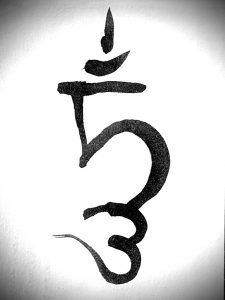From “Bodhisattvacharyavatara” (A Guide to the Boddhisattava’s Way of Life)
By: Shantideva
Chapter 9 “Wisdom” herein outlined per Library of Tibetan Works and Archives publication, 1979
“All of these practices were thought
By the Mighty One for the sake of wisdom
Therefore, those who wish to pacify suffering
Should generate this wisdom”
I. Recognition Of The Nature Of Wisdom
A. Ascertaining The Two Truths
- Refuting objections concerning deceptive truths
- Refuting objections of the Chittamatrins (Mind-Only School) concerning ultimate truth
B. Establishing As The Path The Knowledge That Deceptive Truths Are Like Illusions
C. Establishing As The Path The Knowledge That Ultimate Truths Are Emptiness
II. Introducing The Object Of Meditation: Identfitylessness
A. The Identfitylessness Of The Person
- A general refutation of personal identity
- A refutation of the self postulated by the Samkhya School
- A refutation of the self postulated by the Naiyayila School
- Rejection of arguments concerning Identfitylessness
B. The Identfitylessness Of Phenomena
- Close placement of mindfulness on the body
- Close placement of mindfulness on feelings
- Close placement of mindfulness on the mind
- Close placement of mindfulness on phenomena
- Rejection of arguments
III. Negating The Conception To Be Eliminated: The Apprehension Of True Existence
A. Refuting The True Existence Of Subject And Object
B. Establishing Emptiness Of True Existence From The Viewpoint Of The Cause
- Refuting production from no cause
- Refuting production from a permanent cause
- Summary
- Establishing that phenomena conventionally arise from causes
C. Establishing Emptiness Of True Existence From The Point Of View Of The Effect
IV. The Results Of Wisdom




